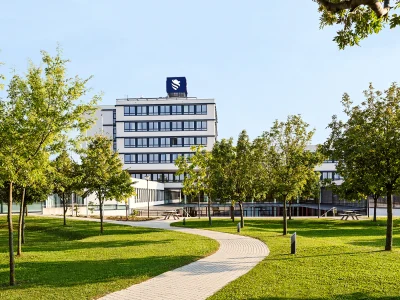
Vanessa Fröhlich
Position
Location
Campus 1 Wiener NeustadtJohannes Gutenberg-Straße 3
2700 Wiener Neustadt

Study Programmes / Courses of Studies
Research Activities
Angewandte molekulare Bildgebung
The current project aimed to foster the understanding of the systems biology of a various number of different tumor entities, increasing the knowledge about radiobiological aspects and help to facilitate the integration in the field of radiation therapy planning, verification and treatment monitoring. In this context, the planned R&D research infrastructure will be implemented in the research facilities of the University of Applied Sciences Wiener Neustadt and the ion therapy and research center – MedAustron to support (1) expert training of students and scientific staff in theoretical (lectures) and practical (“hands-on training) aspects of preclinical molecular imaging techniques, (2) collaborative research especially in the field of functional imaging, medical physics and radiation biology to investigate molecular changes in tumor biology and microenvironment during radiotherapy, (3) acquisition, performance analysis and verification of preclinical imaging techniques in radiation therapy. The intention of the R&D research infrastructure is to provide the basis for cutting-edge biomedical research in the field of both conventional and ion radiotherapy in a regional, national and international context. In addition the project benefits and increase the quality of the education in the academic environment (students, scientific staff, etc…) in the field of quantitative molecular imaging, medical physics, radiobiology, radiation therapy planning and verification and helps to increase the understanding of (patho)physiological processes concerning the systems biology of a various number of different tumor entities.
PAIR
Cancer therapy has experienced a rapid surge in the use of protons and carbon ions, over high-energy photons. This is due to their superior physical properties, including their major energy deposition at the end of their range and their higher ionization densities of particle beams. The biological outcomes are less damage to healthy tissue, as well as altered DNA damage and cellular signaling.
